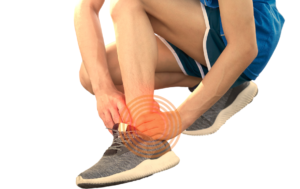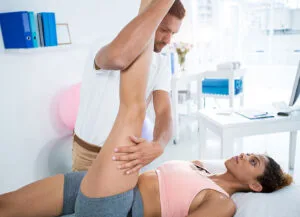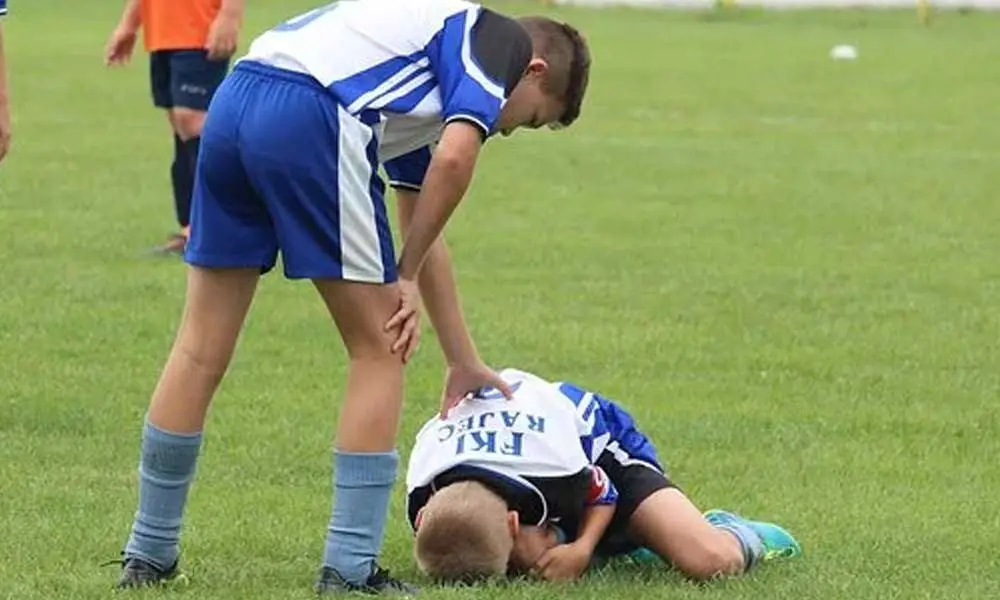Sports-related injuries are frequent and can affect your bones, muscles, tendons, ligaments, and other body parts. Many minor sports injuries can be treated at home using rest, ice, compression, elevation, and over-the-counter painkillers. However, some injuries need medical attention, including physical therapy, and immobilization, maybe surgery in some cases.
How do sports injuries occur?
Exercise is crucial for overall health, yet sports and other physical activities frequently result in injuries. An injury sustained while participating in sports, exercise, physical activities, or athletic activities is referred to as a sports injury. A sports injury may be chronic (develop over time) or acute (sudden).
Who could sustain a sporting injury?
Anyone can sustain a sports injury, especially those who:
are not in good shape.
wear inappropriate protection gear.
workout without a warm-up or cool-down.
play contact sports where there may be tackling or collisions.
participate in exercises that require you to leap, run, pivot, or change directions fast.
had accidents
What bodily parts sustain injuries the most frequently?
Any portion of your body can suffer a sports injury. They frequently impact:
Ankle:
At the ankle, your leg and foot converge. It has many bones, cartilage, ligaments, muscles, tendons, and three joints. A sprained ankle frequently results in ankle pain.
Elbow:
Your elbow serves as the hinge between your upper and lower arms. Because of repetitive actions and overuse, people frequently feel elbow pain.

Head:
Your face, skull, and brain are all parts of your head. A concussion is one of the most frequent head injuries.
Knee:
The complicated joint in your knee serves as a hinge between your lower leg and thigh. It has tendons, ligaments, cartilage, and bones. The jumper’s knee or the runner’s knee can both result in knee pain. Meniscus tears and anterior cruciate ligament (ACL) tears are two other prevalent ailments.

Shoulder:
Your shoulder serves as the link between your upper arm and your body’s core. It houses your rotator cuff, a collection of tendons and muscles that keeps your upper arm in the shoulder joint. Injuries to the rotator cuff, including tendonitis and tears, are frequent in sports.
What sports injuries occur most frequently?
Sports injuries do not happen in one form but can affect you in many forms. Among the most typical are:
Bone fracture:
When a bone is subjected to unexpected force, a broken bone (bone fracture) may result.
Torn cartilage
Some bones have cartilage covering and protection at their ends because it is a strong but flexible shock absorber. Joints including your knee and shoulder can sustain cartilage damage.
Concussion:
A bump or blow to the head might injure your brain, resulting in a concussion.
Dislocation:
A dislocation happens when the end of a bone shifts from the joint’s usual position. Your shoulder, for instance, is dislocated if it pops out of its socket.
Tendinitis:
Tendonitis develops when the tissues (tendons) that attach muscles to bones swell and become inflamed. Over time, repetitive movements are what lead to it. Jumper’s knee is one instance (patellar tendonitis).
Sprains:
When a ligament extends too much or tears, it becomes sprained. Ligaments hold joints together and link bones. Your ankle, knee, and wrist are frequently the sites of these injuries, which can be mild or serious.
Strains:
A strain happens when a muscle is overextended to the point of stretching or tearing. Hamstring, back, and abdominal strains are a few examples.
What signs indicate a sports injury?
Depending on the type of damage, different signs and symptoms may accompany it. Typical signs include:

discomfort, tenderness, or aches.
Bruising
Deformity, such as an irregularly shaped bone or joint.
a smaller range of motion
Noises like grinding, cracking, clicking, or popping.
inability to support your hip, leg, or foot with your weight.
pleasantly warm to the touch skin.
weakness or stiffness.
Swelling.
Problems with a body part’s usual movement, such as limited movement or locking up when you try to move it.
How are sports injuries treated?
Depending on the nature and severity of a sports injury, there are many different types of treatment. With rest and at-home treatments, many sports injuries recover in a matter of days or weeks.
However, therapy for more severe wounds may entail:
- To strengthen and heal broken body parts, physical therapy (often referred to as rehabilitation or rehab) is used.
- Advanced Physiotherapy such as Extracorporeal Shock Wave, Pulsed Cell Repair Therapy, etc.
- immobilization with a walking boot, cast, splint, sling, or other medical devices.
- injections to lessen pain and swelling.
- Anti-inflammatory prescription drugs.
- surgery to repair ligament, tendon, or cartilage injuries, or to fix fractures in some cases
How can I lower my chance of suffering a sports injury?
Sports injuries can be prevented in a variety of ways.

- Engage in appropriate warm-up exercises before starting an intense sports activity. Try and spend some time warming down after the intense activity as well.
- Before, during, and after any exercise, drink a lot of water.
- Pick less intense sports and activities to engage in (for example, avoid sports that involve collisions and tackles).
- Don’t engage in the same sport or activity all year long. For kids, this is extremely crucial.
- Alternate your routine. Your body needs a mix of flexibility, strength training with weights or resistance, and aerobic (aerobic) exercise.
- Use good technique consistently by learning and practicing it.
Conclusion
Sports and exercise are crucial for maintaining good health, yet certain activities result in injuries. With rest and other methods, many common, minor sports injuries can be treated at home. But if discomfort, bruising, swelling, or the inability to utilize the damaged area doesn’t go away in a few hours or days, you should consult a doctor.
While there are many cures for Sports Injuries, the right treatment can significantly reduce your injuries. Maana Health offers a variety of solutions and treatments for Sports Injuries in Kerala.
Aside from the treatments Maana suggests, there are a few lifestyle changes you can make to help you manage your Sports Injuries.

